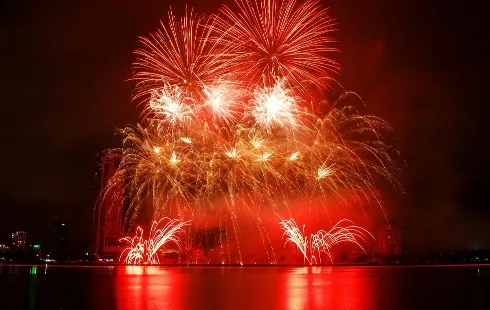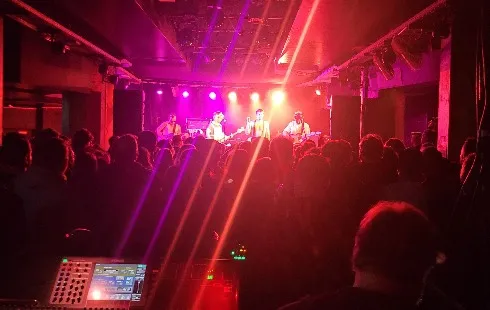
Pantone's Color of the Year an Endless Neutral Loop
Section: Fashion
"I don't want to go to Heaven. I want to be a Harajuku girl". This is what John Galliano would say once he visited Tokyo's cult neighborhood, the home of dazzling pop culture, melted in textures, colors, independent labels and social attitude. Harajuku's shopping malls and intimate boutiques cuddled along Omotesando Street, pinned down Japan on the world's fashion map, together with New York, London, Paris and Milan. This article will take you on a virtual tour starting from Tokyo streets and crossing through the fashion map of Japan as a cultural phenomenon, from Nara period's traditions to pure style individualism.
Japan is a country that can't be labeled, and understanding it takes more than a visit or two. It's a place, embracing in itself Zen Buddhism and cutting edge technology, busy electrical streets and the quietest parks one could ever imagine. And it wears taboo and freedom, a unique experience that can be seen everywhere. Let's start our journey from the streets of Harajuku district in Tokyo. It is considered as the epicenter of street fashion in Japan, where the world famous designers don't go to set up trends, they go there to check what's trendy. The area was a small village inhabited by low level samurai, but it received its face of youth culture after the WWII, when US army barracks, called Washington Heights were built there, and brought catering shops for the military families. This attracted young people curious about Western culture. In 1978, the Laforet fashion mall opened, hosting newly emerging Japanese fashion labels and designers, and quickly became the main attraction and one of the symbols of the modern independent fashion in Japan. It simply turned into a concept, proclaiming energy and challenging the unconventional.
Taking a walk on the streets of Harajuku is like going through a page of Alice in Wonderland, but more styled and unique. The trends of Decora, Goth-Loli, Cyber-Punk, Mori Girl move in crowds and laughter. Because street style in Harajuku is about fun and pure fashion, with no burden of special social message, it's only sense of belonging. Everything is selected with extreme care and attention to details.
Now, let's position ourselves between the two neighboring stops on Yamanote Line - Harajuku and Shibuya, and take a walk along the coble streets, connecting distinctive fashion and style, merging into one another like a colorful stream. There are the Decora girls with their experimental patterns, fabrics and excessive accessories - from plastic toys to glittering tattoos; Goth Lolitas not wearing prejudice, but bell shaped skirts, lace corsets and tights and looking extremely daring and innocent with their Victorian manners. They send a simple cultural message: "I am cute, not sexy". Running forward in time, here are the Mori and Yama girls, bringing style close to the nature and fairy tales, told by the Forest. Walking around, one can hear the noise coming from those synthetic materials, used as an interpretation of life and expression of high creativity and style independence. The combination of color, form and sound that is seen in Harajuku, could be traced back to Kabuki performances and costumes (the well-known avant-garde theater) which have influence as a socio-cultural factor in the development of the modern Japanese style.
To get a better understanding of the Japanese style and current trends, I met with a young fashion designer, originally from Taiwan, but living in Japan for more than five years, and having designer houses like Armani in her portfolio. Her name is Renna Katsu and she gets inspired by everything and everywhere, simple and natural. Renna works for "Deep Sweet Easy" - an alternative label with shops in Shibuya and Yokohama, targeting the young crowd that wants to keep up with the edgy ever-changing styles that never surrender the purpose of "being daring and different". "DSE" have catwalk performances twice a year of their own clothing, shoes and bags collections.
If we take a closer look at Japan, beyond the borders of Harajuku and Shibuya, there's one fashion icon that will always be featured in Japan, and this is the Geisha. For hundreds of years, she has been the symbol of all feminine and exquisite, a sophisticated entertainer, who knew the art of seduction and self-expression. The semantics says Geisha means Artist; the Style says Geisha brings uniqueness in make-up, hair style and kimono, as she assembles the look on her own, being an elegant lady at every moment and every day. Nowadays, Geisha houses still exist in Kyoto, so when visiting the city, it's highly recommended to spend at least few hours getting lost on it's winding streets and hopefully encounter a glance of this fashion leader.
Another key element of the Japanese fashion stage is the Kimono, which has developed steadily during the different historical periods. It was heavily influenced by the Buddhism and Chinese culture during the Nara period, but it wasn't before Henian period until it adopted its Japanese face and details - straight lines and layers, showing the praise for minimalism and sophistication in Japan, still keeping the creativity with contrasting or matching of colours. Today's kimono is following similar path, and it's one of the most popular Japanese costumes which has embraced in itself the tradition expressed in modernization and freedom. Kimono also implies a spirit of sensitivity of beauty and aesthetics - key objects to understand the Japanese philosophy of life.
Back to Harajuku, those that made the big difference there weren't exactly the street models, but the designers. It all started in the 60s and 70s, when the property in this part of town was cheaper than other Tokyo districts. That made possible the consolidation of small home based designer shops to embrace creativity and scale production known as "Mansion Makers". All the names of Hitomi Okawa's Milk, Mitsuhiro Matsuda's Nicole, Kansai Yamamoto Y's, Comme des Garcons and Yohji Yamamoto's Y's emerged from Harajuku. Only Issey Miyake conquered Harajuku by having a license already, allowing him to distribute through fashion manufacturers. The meeting point of this turbulence was at the Central Apartments, hosting pioneers of Japanese fashion, style, photography, music and advertising. Not later on, the first boutique Non Non was opened on the first floor of Central Apartments, followed by Milk. Not too late after came the editorial offices of magazines such as Harper's Bazaar. The most significant of all boutiques was definitely Hitomi Okawa's Milk, opened in 1970. She was a buyer, promoter, party girl and inspiration, which pinned her down as one of the symbols of Harajuku. Not too long after, the world fashion scene became her regular visitors - Vivienne Westwood and Stephen Jones hung out there, and David Bowie and John Lennon became favorite customers. Okawa took the world fashion trends, swirled and tumbled them, and took them out as a colorful mix of new styles and attitudes, making even punk look cute. Milk as well impacted seriously the Japanese fashion crowd. Comme des Garcons was first sold there. Okawa drown in inspiration when she went to London. She fell in love with the street style culture, and decided to replicate it in Japan, challenging the high end couture of the key shopping center Ginza. When she started, she had no experience with fashion design. Her first clothes were made of military surplus fabrics and coarse, industrial material, used for making workers' clothes. She knew it will be the cool people who would pull all this off.
Nowadays, one of the well-known alternative fashion names is Nozomi Ishiguro, who started his career in Comme de Garcons to accelerate to his independent fashion label in 2002. One of the signature details of Ishiguro's designs is the use of multiple layers and overlapping tufts of fabric. The patterns and style show themes from samurai costumes, a mixture of elements to create three dimensional looking pieces, which follow the concept of body disguise, elegance and simplicity; or also known as Japanese aesthetics.
Japanese Fashion is a complex phenomenon, a medley of steady culture and fast moving modernization. The first aims for subtlety, cuteness and elegance, the latter strikes for self-expression, courage and exaggerated style. And all this is visualized in Harajuku. The area kept its presence of a place, where the fashion icons are not the celebrities, but the people on the streets. Heavily influenced by pop culture and celebrity copying attitude, the Japanese Fashionistas still keep their strong self. They confront the social norms and relentlessly hunting for the new, representing an endless vanity fair and having more than 15 minutes of fame.

Section: Fashion

Section: News

Section: Fashion

Section: Arts

Section: Politics

Section: Health Insurance

Section: News

Section: News

Section: News

Section: Arts
Both private Health Insurance in Germany and public insurance, is often complicated to navigate, not to mention expensive. As an expat, you are required to navigate this landscape within weeks of arriving, so check our FAQ on PKV. For our guide on resources and access to agents who can give you a competitive quote, try our PKV Cost comparison tool.
Germany is famous for its medical expertise and extensive number of hospitals and clinics. See this comprehensive directory of hospitals and clinics across the country, complete with links to their websites, addresses, contact info, and specializations/services.
Join us for an enchanting Christmas adventure at the Münchner Marionettentheater! Experience the marionette play 'Der verschwundene Wunschzettel' by Siegfried Böhmke, featuring our beloved Kasperl Larifari and his little friend Stupsi. As Christmas approaches, both Kasperl and Stupsi have prepared...



No comments yet. Be the first to comment!